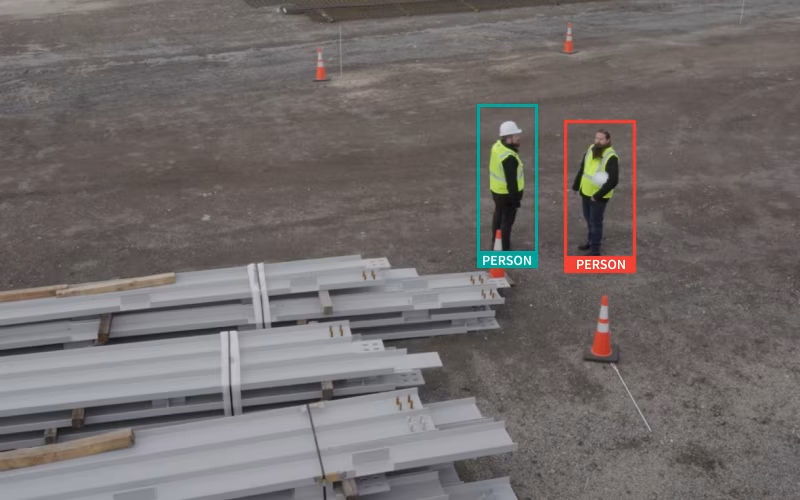Stop the Trash: Illegal Dumping Prevention

All about illegal dumping, its costs, impact, and how to stop the poopy problem immediately
It is estimated that each day in the US, more than two tons of promiscuous dumping, also known as illegal dumping, litters streets, waterways, and the air. Parents be forewarned: it is hard to stop once the promiscuity begins.
Disposal of trash in unauthorized areas has harmed human health, scarred the environment, closed businesses, and forced people to move. In addition, the dumps cost municipalities approximately $600 per ton to clean up.
But in Camden, New Jersey, city officials discovered how to stop illegal dumping entirely. “It’s 100% working,” said Keith Walker, director of the city’s Department of Public Works.
What’s “it?”
The fact that, no, most humans do not want to promiscuously dump on camera. And the fact that the mobile security units they deployed put an immediate stop to the problem. An effective illegal dumping prevention campaign armed with facts, tools, and proven tactics, can instantly block the flow of ugly dumps.
Facts about illegal dumping:
- 1.5 million tons of trash is illegally dumped each year in the US (source: EPA)
- This equates to approximately 4,109 tons of trash per day
- 100 million tons of trash is illegally dumped per year worldwide
- Illegal dumping statistics do not include cigarette butts and plastic bags
- Illegal dumping costs $600 per ton on average to clean up
- Large cities spend millions on cleanup each year. For example, in 2022, illegal dumping cost taxpayers in Seattle $1.9 million.
The legal definition of illegal dumping is the disposal of trash, littering, or intentional dumping or burning of materials in any unauthorized manner. The following are a few common and not-so-common phrases used to describe a grossly misplaced pile of trash:
- Promiscuous dumping: Describes illegal dumping on Bureau of Land Management (BLM) land. When left unmonitored, as BLM land often is, dumps pile up. Trash attracts more trash.
- Fly tipping or fly dumping: Is another term for illegal dumping. They can be used interchangeably.
- Littering: Means depositing, discarding, or leaving litter on the street, in a public place, or on private property that is not the property of the person, except in a litter receptacle or a container designed for garbage collection. (source: LawInsider)
Fines can go up to $5,000. Businesses can be fined millions or billions if they're guilty of dumping hazardous waste on a larger scale. Illegal dumping has many environmental costs on people, businesses, the environment, and society. The following describes the trickle-down effects of illicit trash in its various forms.
Environmental Costs
Illegal dumping has harmed not only communities but also the environment. Natural habitats and wildlife have been devastated. In addition, when dumped in wooded areas, wetlands, or other sensitive ecosystems, the damage caused by trash has often attracted other pollutants and invasive species, furthering the disruption of nature’s delicate balance.
Illegal dumping has increased the risk of fire. In addition, trash contains many toxic chemicals. The gasses mix with others, and BOOM!
A perfect recipe for combustion.
When dumped in or near waterways, water has been contaminated and made unsafe for drinking, fishing, and swimming.
Moms, dads, and kids everywhere have regularly been alerted to contaminants the day after a nice swim in a lake. Upon hearing the news, they experienced feelings of disgust and avoidance. Then, the once good memory became poopy—tainted with chemicals, trash, or human waste.
The last environmental victim of illegal dumping has been the air. Improper waste disposal releases harmful chemicals and pollutants, sometimes smelly. Pollution from unlawful dumping has resulted in respiratory problems, headaches, and other health issues, especially in communities near illegal dump sites.
Economic Costs
When dumped in unauthorized areas, municipalities, business owners, and taxpayers have paid (sometimes significantly) to clean up the mess. Someone has to get paid to clean up and dispose of the trash.
Property values have decreased. No one wants to live or work near a pile of trash, and an illegal dump site can make it difficult for property owners to sell or rent out their properties.
Guests have dumped hot tourist destinations and recreation sites. Revenue has been lost. Local economies have been devastated by the resulting job loss.
Social Costs
One of the most severe social costs of illegal dumping has been the health risks posed to communities. When dumped in or near residential areas, garbage often attracts pests, such as rodents and insects, which can carry diseases. In the worst cases, residents catch those diseases.
Residents with a trash problem also care less about the city where they live and have a lower quality of life. They do not take pride in their town. Looking unattractive and unkempt, residents often feel discouraged and lack the motivation to take care of their property or participate in community events.
When public spaces or natural areas suffer from illegally dumped trash, places like parks, trails, or playgrounds become unusable. In addition, the lack of community spaces negatively impacted community members' overall quality of life, especially those who rely on these resources for physical and mental well-being.
The Solution
The following are four proven ways to prevent and protect a site and community from dump invasion:
- Education and outreach programs. Educating the public about the harms of illegal dumping and the importance of proper disposal and recycling gradually changes attitudes and behavior. In addition, community events, workshops, and educational materials such as brochures and social media campaigns are tools to successfully keep trash where it belongs.
- Have more containers available in the fight against trash. Prominent signage makes trash cans hard to ignore and excuse garbage from going anywhere but in its appropriate container.
- Legal and enforcement measures. By enforcing laws and regulations related to illegal dumping, would-be dumpers hold those responsible for their actions. Punishments can include fines, penalties, and even criminal charges. Some communities have also rewarded those who report illegal dumping with as much as $500.
- Additional security monitoring.
Cameras, audio alerts, monitoring, and lighting immediately prevent and detect dumpers. Additional security is both less costly and more effective. Cameras deter would-be offenders, as well as warn and record unauthorized activity. Clean-ups can happen quickly, and the evidence recorded can be turned over to the authorities.
As in Camden, illegal dumping can be stopped quickly and easily. They deployed LVT’s mobile security unit and ended their trashy problem.
Illegal dumping has devastated communities, residents, and the environment. The surefire way to stop it is to improve security.
Clean up any location in an instant. Contact LVT for a demo today.



